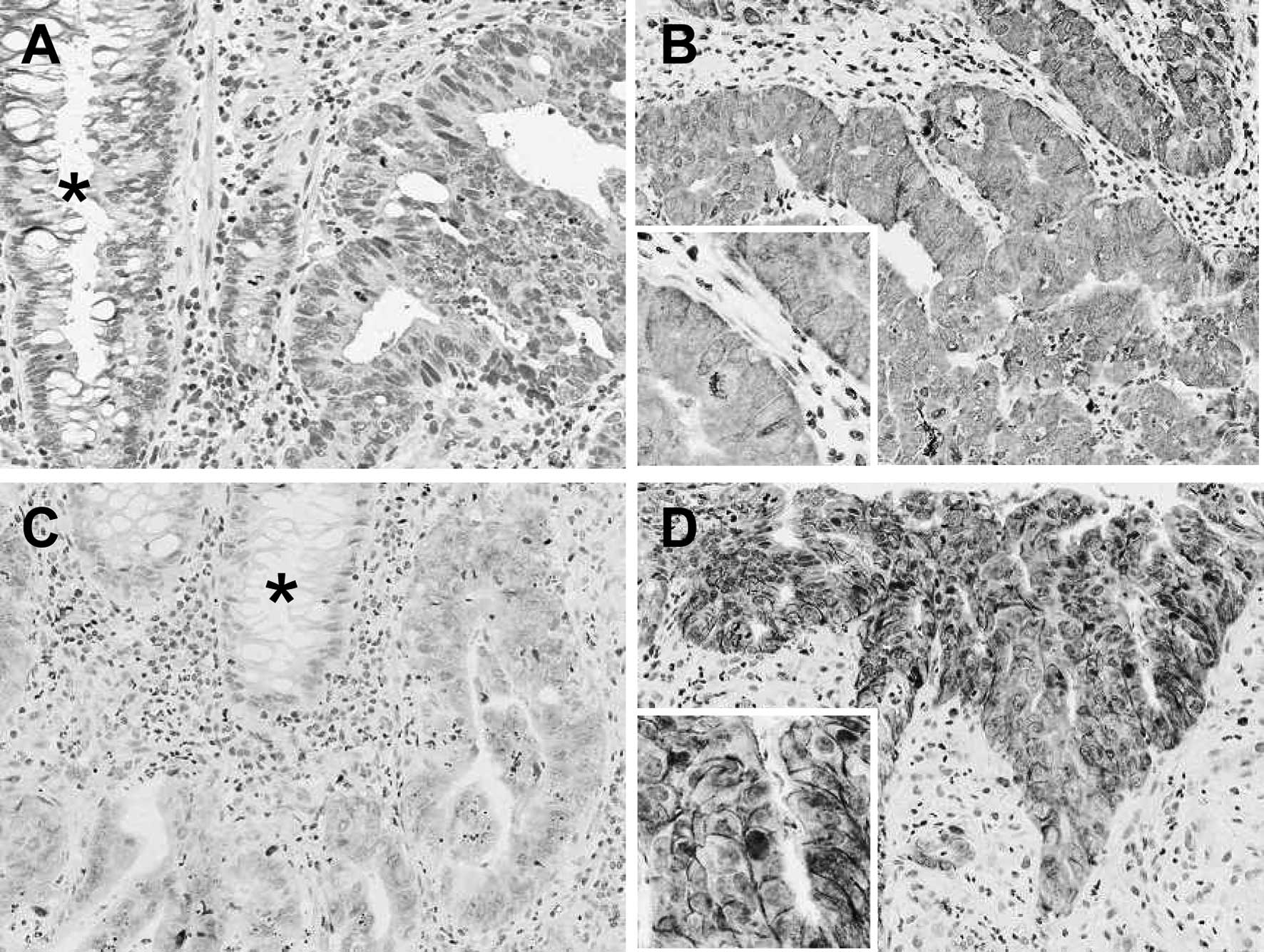|
1.
|
Fujii S, Ikenaka K, Fukushima M and
Shirasaka T: Effect of uracil and its derivatives on antitumor
activity of 5-fluorouracil and
1-(2-tetrahydrofuryl)-5-fluorouracil. Gann. 69:763–772.
1978.PubMed/NCBI
|
|
2.
|
Milano G, Ferrero JM and François E:
Comparative pharmacology of oral fluoropyrimidines: a focus on
pharmacokinetics, pharmacodynamics and pharmacomodulation. Br J
Cancer. 91:613–617. 2004.PubMed/NCBI
|
|
3.
|
Anttila MI, Sotaniemi EA, Kairaluoma MI,
Mokka RE and Sundquist HT: Pharmacokinetics of ftorafur after
intravenous and oral administration. Cancer Chemother Pharmacol.
10:150–153. 1983. View Article : Google Scholar : PubMed/NCBI
|
|
4.
|
Longley DB, Harkin DP and Johnston PG:
5-Fluorouracil: mechanisms of action and clinical strategies. Nat
Rev Cancer. 3:330–338. 2003. View
Article : Google Scholar : PubMed/NCBI
|
|
5.
|
Borner MM, Schöffski P, de Wit R, et al:
Patient preference and pharmacokinetics of oral modulated UFT
versus intravenous fluorouracil and leucovorin: a randomised
crossover trial in advanced colorectal cancer. Eur J Cancer.
38:349–358. 2002. View Article : Google Scholar
|
|
6.
|
Carmichael J, Popiela T, Radstone D, et
al: Randomized comparative study of tegafur/uracil and oral
leucovorin versus parenteral fluorouracil and leucovorin in
patients with previously untreated metastatic colorectal cancer. J
Clin Oncol. 20:3617–3627. 2002. View Article : Google Scholar
|
|
7.
|
Douillard JY, Hoff PM, Skillings JR, et
al: Multicenter phase III study of uracil/tegafur and oral
leucovorin versus fluorouracil and leucovorin in patients with
previously untreated metastatic colorectal cancer. J Clin Oncol.
20:3605–3616. 2002. View Article : Google Scholar : PubMed/NCBI
|
|
8.
|
Lembersky BC, Wieand HS, Petrelli NJ, et
al: Oral uracil and tegafur plus leucovorin compared with
intravenous fluorouracil and leucovorin in stage II and III
carcinoma of the colon: results from National Surgical Adjuvant
Breast and Bowel Project Protocol C-06. J Clin Oncol. 24:2059–2064.
2006. View Article : Google Scholar
|
|
9.
|
Dobson PD and Kell DB: Carrier-mediated
cellular uptake of pharmaceutical drugs: an exception or the rule?
Nat Rev Drug Discov. 7:205–220. 2008. View
Article : Google Scholar : PubMed/NCBI
|
|
10.
|
Sissung TM, Baum CE, Kirkland CT, Gao R,
Gardner ER and Figg WD: Pharmacogenetics of membrane transporters:
an update on current approaches. Mol Biotechnol. 44:152–167. 2010.
View Article : Google Scholar : PubMed/NCBI
|
|
11.
|
Marzolini C, Tirona RG and Kim RB:
Pharmacogenomics of the OATP and OAT families. Pharmacogenomics.
5:273–282. 2004. View Article : Google Scholar : PubMed/NCBI
|
|
12.
|
You G: The role of organic ion
transporters in drug disposition: an update. Curr Drug Metab.
5:55–62. 2004. View Article : Google Scholar : PubMed/NCBI
|
|
13.
|
Kobayashi Y, Ohshiro N, Sakai R, Ohbatashi
M, Kohyama N and Yamamoto T: Transport mechanism and substrate
specificity of human organic anion transporter 2 (hOat2 [SLC22A7]).
J Pharm Pharmacol. 57:573–578. 2005.
|
|
14.
|
Sirotnak FM and Tolner B: Carrier-mediated
membrane transport of folates in mammalian cells. Annu Rev Nutr.
19:91–122. 1999. View Article : Google Scholar : PubMed/NCBI
|
|
15.
|
Blehaut H, Mircher C, Ravel A, et al:
Effect of leucovorin (folinic acid) on the developmental quotient
of children with Down’s syndrome (trisomy 21) and influence of
thyroid status. PLoS One. 5:e83942010.PubMed/NCBI
|
|
16.
|
Japanese Society for Cancer of the Colon
and Rectum: Japanese Classification of Colorectal Carcinoma. 2nd
English edition. Kanehara Shuppan Co. Ltd.; Tokyo: 2009
|
|
17.
|
Kamoshida S, Matsuoka H, Shiogama K, et
al: Immunohistochemical analysis of thymidylate synthase,
p16INK4a, cyclin-dependent kinase 4 and cyclin D1 in
colorectal cancers receiving preoperative chemotherapy:
significance of p16INK4a-mediated cellular arrest as an
indicator of chemosensitivity to 5-fluorouracil. Pathol Int.
54:564–575. 2004.PubMed/NCBI
|
|
18.
|
Ichikawa W, Uetake H, Shirota Y, et al:
Both gene expression for orotate phosphoribosyltransferase and its
ratio to dihydropyrimidine dehydrogenase influence outcome
following fluoropyrimidine-based chemotherapy for metastatic
colorectal cancer. Br J Cancer. 89:1486–1492. 2003. View Article : Google Scholar
|
|
19.
|
Sadahiro S, Suzuki T, Tanaka A, Okada K,
Nagase H and Uchida J: Association of right-sided tumors with high
thymidine phosphorylase gene expression levels and the response to
oral uracil and tegafur/leucovorin chemotherapy among patients with
colorectal cancer. Cancer Chemother Pharmacol. 70:285–291. 2012.
View Article : Google Scholar
|
|
20.
|
Seithel A, Karlsson J, Hilgendorf C,
Björquist A and Ungell AL: Variability in mRNA expression of ABC-
and SLC-transporters in human intestinal cells: comparison between
human segments and Caco-2 cells. Eur J Pharm Sci. 28:291–299. 2006.
View Article : Google Scholar : PubMed/NCBI
|
|
21.
|
Odin E, Wettergren Y, Nilsson S, et al:
Altered gene expression of folate enzymes in adjacent mucosa is
associated with outcome of colorectal cancer patients. Clin Cancer
Res. 9:6012–6019. 2003.PubMed/NCBI
|
|
22.
|
Hlavata I, Mohelnikova-Duchonova B,
Vaclavikova R, et al: The role of ABC transporters in progression
and clinical outcome of colorectal cancer. Mutagenesis. 27:187–196.
2012. View Article : Google Scholar : PubMed/NCBI
|















